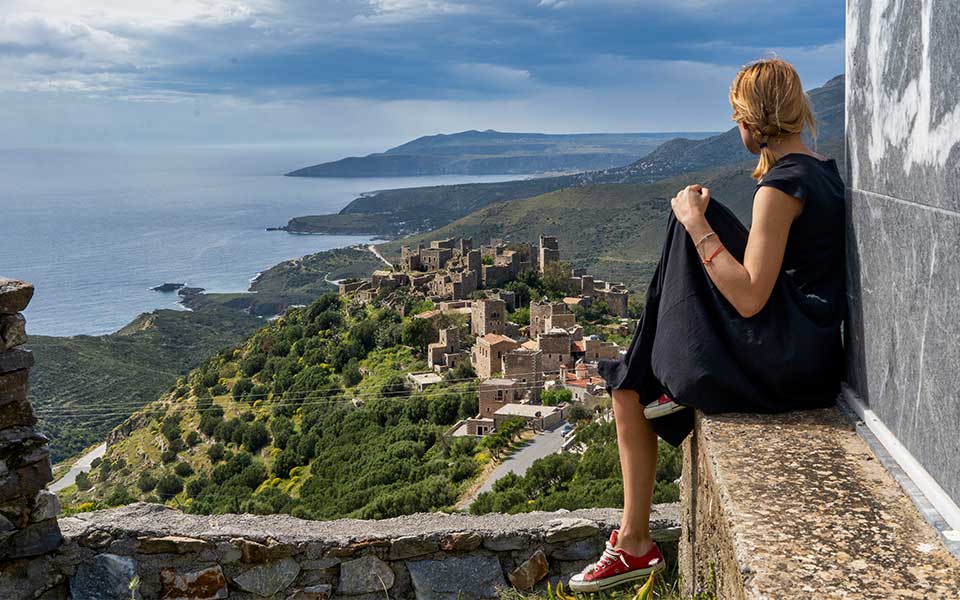Tower houses, low olive trees, cacti adorned with prickly pears, rocky terrain washed by the sea, serene villages, flags waving as if every day was a national holiday… This is Mani, the middle peninsula of the southern Peloponnese, a place where Greek flags flutter alongside local ones that read “Tan i epi tas” (“With it or on it”) – the legendary farewell phrase uttered by ancient Spartan women to departing warriors as they handed them their shields. The Maniots consider themselves to be the descendants of the ancient Spartans.
There are many different ways to be “initiated” into the ways of Mani – unless, as in my case, your photographer happens to hail from this region. In that case, you’ll start from that person’s village, in order to prevent any maniatiko from arising (a term meaning “grudge” that derives from the Maniots’ reputation for never forgiving slights against their pride).
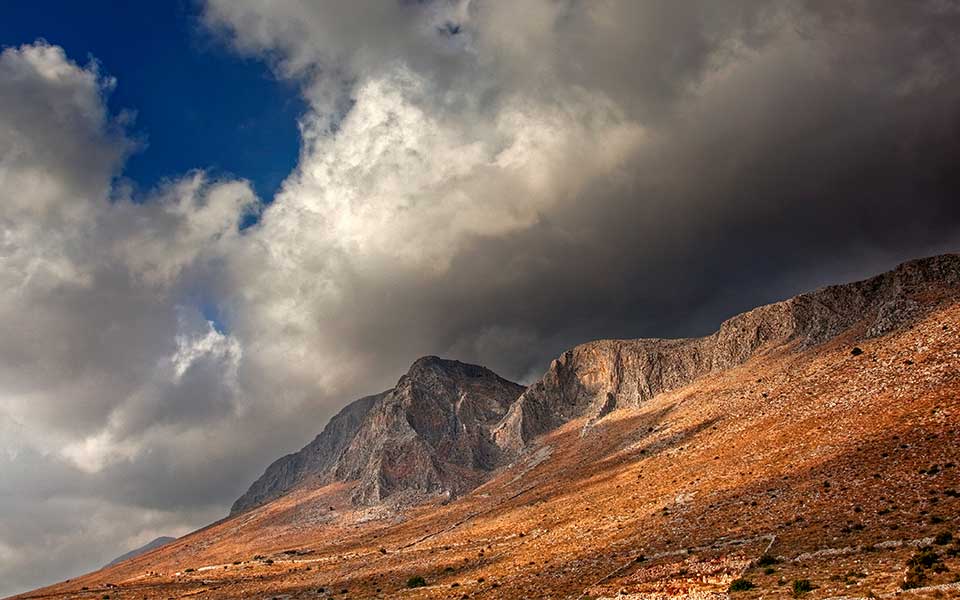
© Perikles Merakos
Thus, we find ourselves scaling Saggias, the windswept mountain that is the natural continuation of Mount Taygetus towards the southern section of Laconia. We park in front of a sign reading “Ancient Pyrrichos.” A verdant plateau unfolds before our eyes, serving as an exception to an otherwise stony motif.
A white cow lends the landscape a touch of the Scottish Highlands. It stops grazing and observes us as we enter the village – now called Kavalos – which is perhaps the least touristy place in the whole of Mani, with no taverna, guesthouse or even kafeneio (traditional coffee house) – just a few inhabitants and dilapidated old tower houses. The walls of the last are covered with what resembles a wallpaper made of wildflowers, bringing to mind a poem by Yannis Ritsos titled “Mani, Flower Made of Stone”.
Though we’re now just six kilometers from sun-drenched Areopoli, it’s as though the season has changed, from summer to the end of fall. You’ll get used to such sudden weather changes while exploring the west coast of Laconian Mani, which is also known as Aposkieri Mani – meaning “shady”; in contrast, the coast on the other side is referred to as Prosiliaki (“sunny”) Mani, as it faces east.
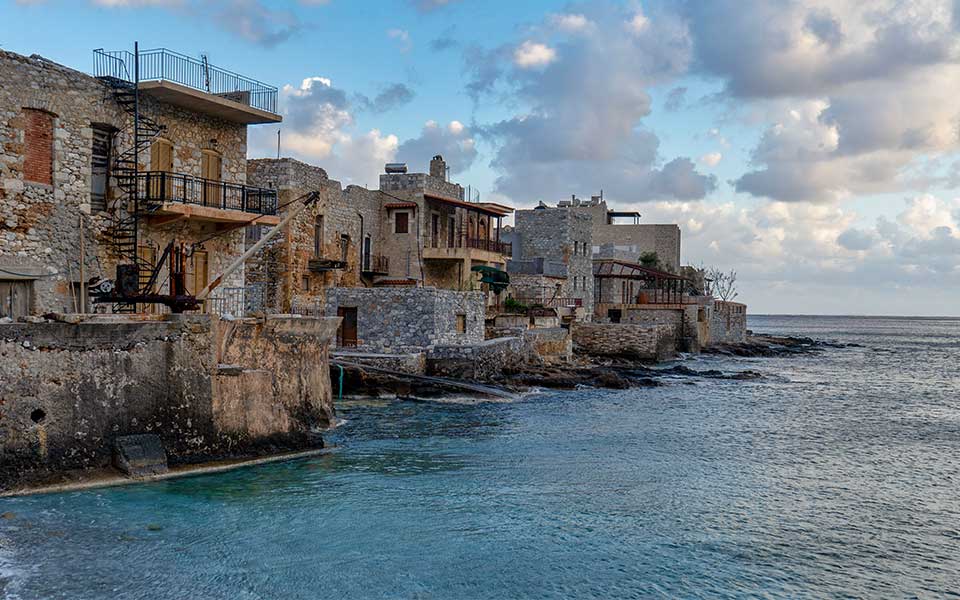
© Perikles Merakos
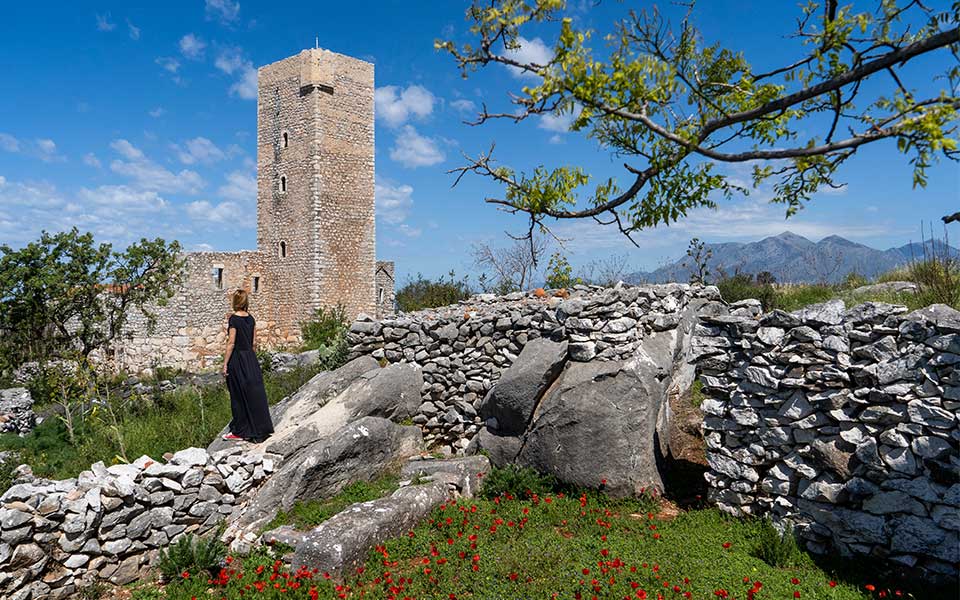
© Perikles Merakos
You’ll also notice these kinds of unexpected changes in people’s behavior, too. Just when you think that the lot of them are pretty hard-edged – the products of a tough, conservative society that survived for centuries observing strict, unwritten laws, out of the blue they’ll affectionately call you korona mou (literally, “my crown,” meaning “my dear”) and catch you totally off guard. And then the very moment you think you’ve won them over, you’ll get the feeling that you’ve overstepped your bounds.
Mani is not the kind of place you can get to know just by picking up a dozen or so tips from Tripadvisor. It’s a difficult challenge for the traveler, especially if one is used to mastering destinations quickly. Getting to know this place requires a hearty appetite for walking – but even more so for driving, as the villages lie scattered about the peninsula, and so you usually need a car, even if it’s just to make your way from your hotel to a restaurant.
However, one thing is certain: when your trip comes to an end, you’ll be left with a sense of achievement.
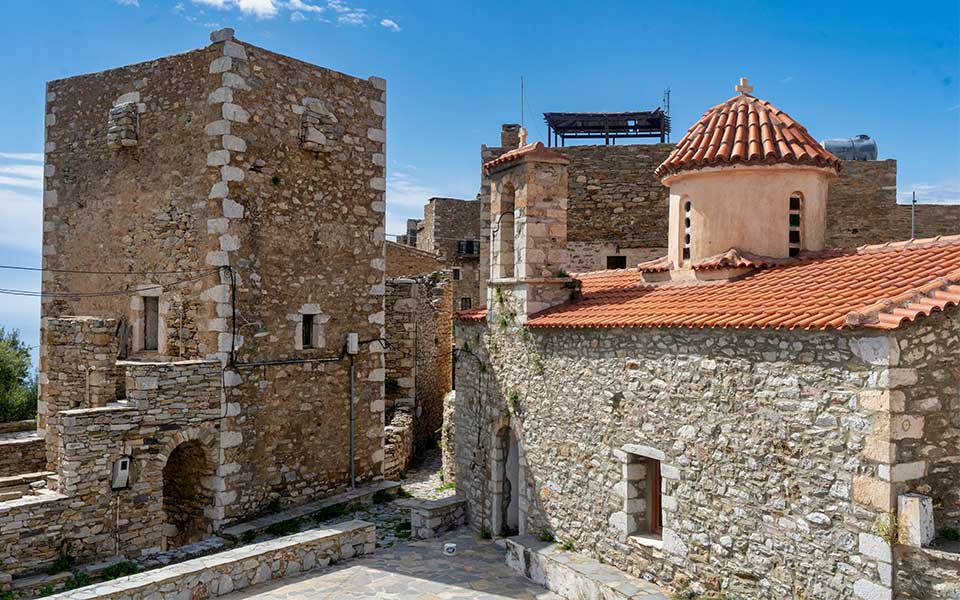
© Perikles Merakos
LAND OF TOWER HOUSES
At the start of our trip, we said we’d try to tally the total number of tower houses (pyrgi) we’d spot, but eventually ended up losing count. In recent years, a good number of them have been reconstructed and converted into boutique hotels. Among these are the historic, heritage tower house belonging to the Mavromichalis clan in Limeni, where Petrobey Mavromichalis, a leader of the Maniots in the 1821 Greek War of Independence, was raised.
You’ll also find the Pyrgos Arapaki, located in the settlement of Charia, where the seafarer Petros Arapakis once lived. You can also get a look at the interior of a Maniot pyrgos by visiting the Byzantine Museum of Mani (tel. +30 27330-29531), which is housed in the Pikoulakis heritage tower house in Areopoli.
Of all of the settlements, Vatheia offers the richest pickings on your pyrgos spotting, although to get the most from it you’ll have to wander through its old lanes. Here you’ll see two and three-story pyrgi built on the flat top of a hill, along with little churches, lots of steps and silent, cobbled lanes. The thought will cross your mind that with a little bit of care, this village of towers, which was rebuilt back in the 1970s, could easily be transformed into an amazing open-air museum.
Not so well-known is Kelefas, a medieval castle with circular towers, which has pretty much been left to its fate. The view from there at sunset is well worth it. If you’re wondering which is the tallest pyrgos in Mani, that distinction goes to the six-story Sklavounakos Tower, which was constructed in 1821 and has a height of 25 meters. It is located in the settlement of Fourniata.
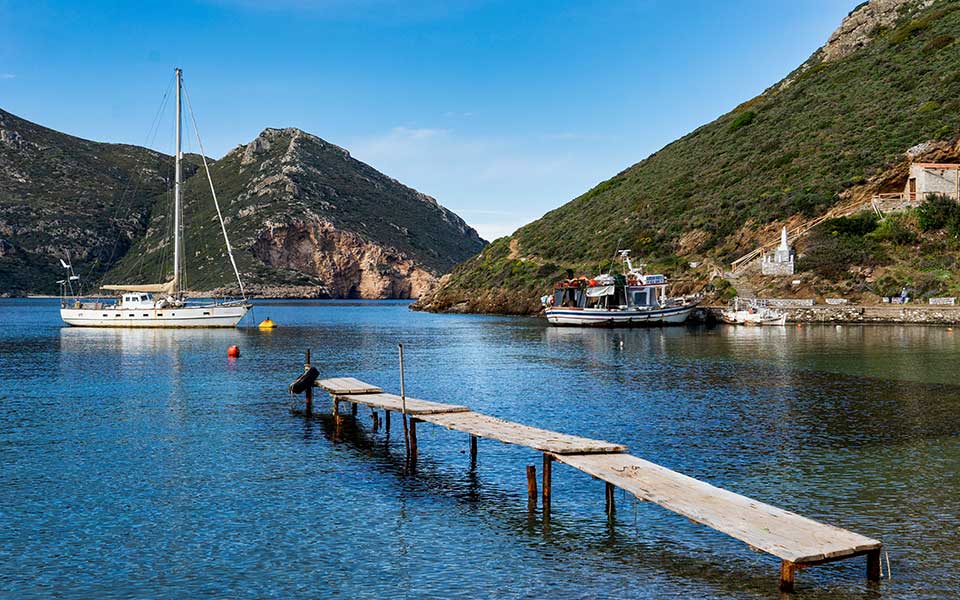
© Perikles Merakos
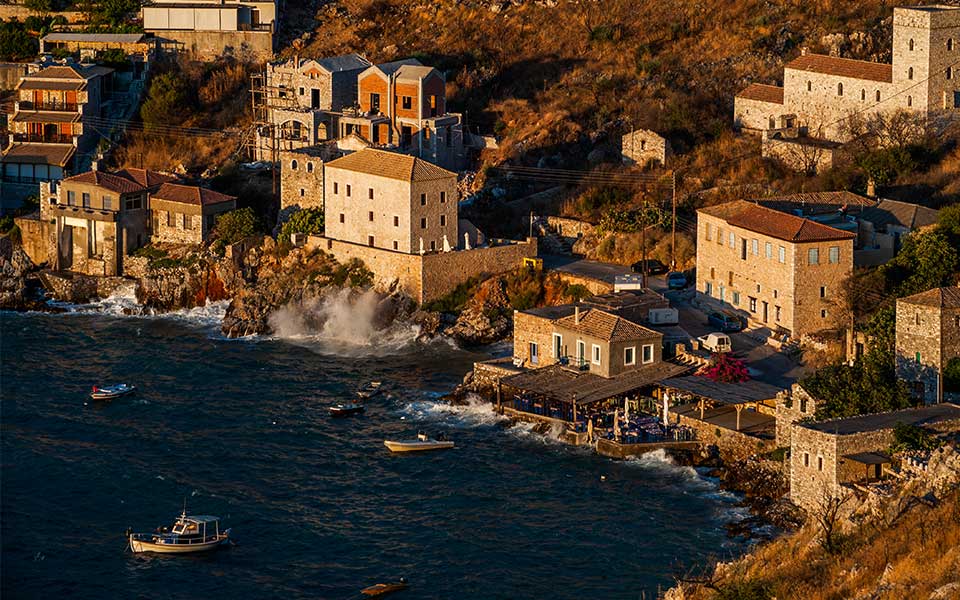
© Perikles Merakos
Sheltered Harbors
In Mani, you won’t come across the classic picture of a quaint village complete with charming square, plane tree and little kafeneio; however, you won’t miss these either. Instead you’ll find idyllic little harbors, such as Porto Kagio. The southernmost natural port of mainland Greece, it once served as the base of operations for the 18th-century (pre-Greek Revolution) hero Lambros Katsonis. Here, you will be able to take a break from swimming in a sheltered little cove for a meal in your bathing suit at a table next to the waves.
Before you leave, be sure to pass by the Psamathous Guest House (tel +30 698.153.0484). Its owner, Antonis Grigorakakis – who is also a well-known painter in the area – will show you round his collection of paintings, which have been inspired by Maniot tradition and the landscape.
Limeni is a perfect blend of stone, turquoise waters and colorful caiques. If you can, stop here at sunset, when the hustle and bustle in the fish tavernas will have subsided. Gerolimenas offers an impressive sight: Cavo Grosso, the rock that looms over its small cove, changing colors according to the position of the sun. Once there were only little huts here, occasionally inhabited by women who did their laundry in the sea and gathered salt; in time, it evolved into a commercial port, with passenger ships from Piraeus docking until the late 1970s. Today, the local economy revolves mainly around tourism.
Start walking from the east side of the cove and follow the paved road between the neoclassical houses on the other side. This seaside route is lovely, as it passes next to cerulean waters lapping against white rocks. The cemetery you will see in the distance resembles a small settlement, as most of them do in Mani.
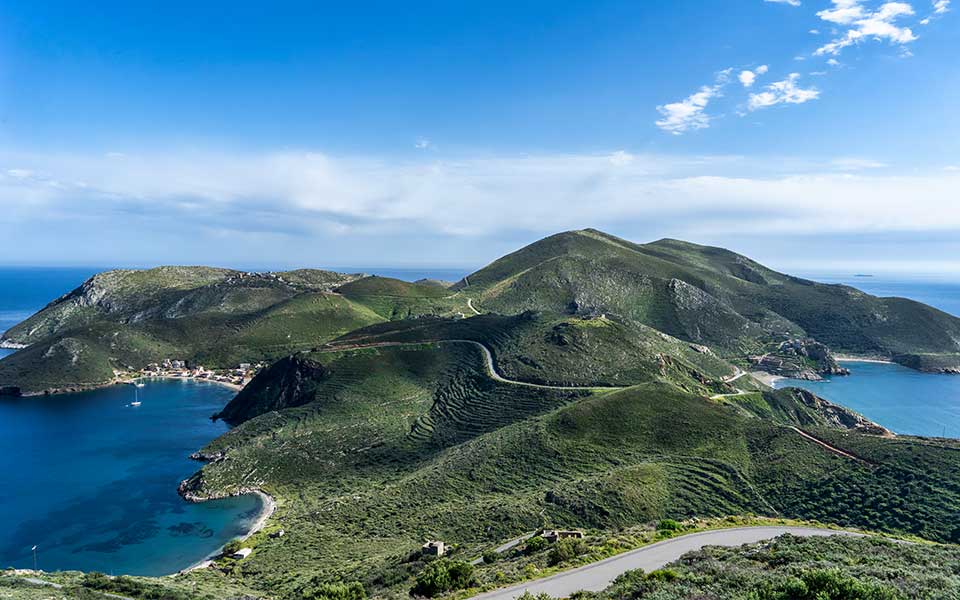
© Perikles Merakos
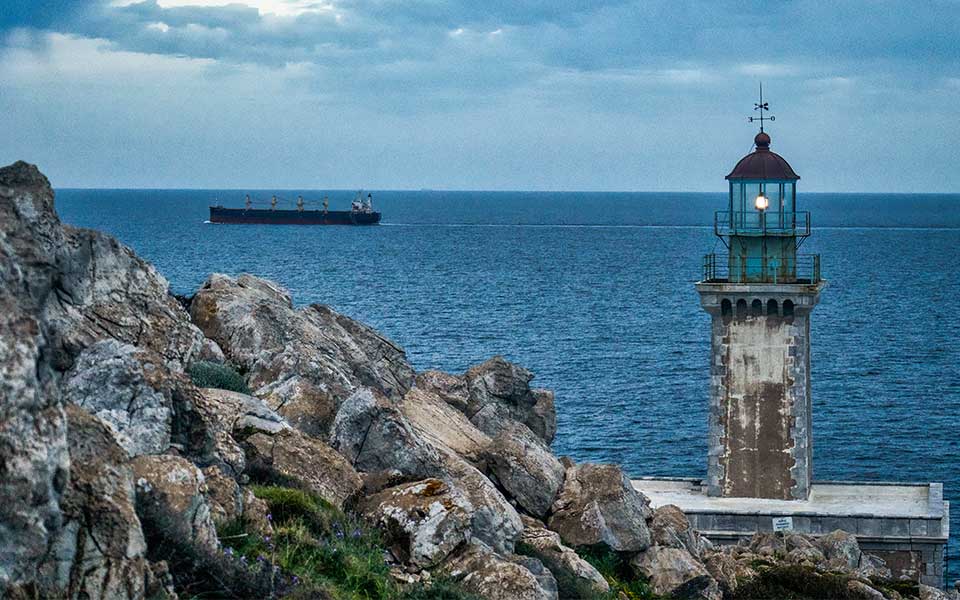
© Perikles Merakos
FROM CAPE TAINARO TO AGITRIA
Cape Tainaro (also known as Cape Matapan), is a place that never loses its rough edge – not even when drenched in the light of the sunset. The landscape is barren and treeless, full of brushwood and asphodels, the latter being the flowers that the ancient Greeks thought to be the food of the dead. It’s easy to feel as though you’ve reached the end of the world as you follow the trail leading to the lighthouse.
Having left Kokkinogeia behind, the bay of Porto Sternes opens out to your left; it was said that the one of the gates of Hades was located in one of its sea caves. If you chance upon a fishing vessel while in the area, it’s likely the image of a boatman ferrying souls to the underworld will come to mind.
The trail gradually becomes more rugged and challenging, and that’s when the surprises start: First, the half-ruined little stone church of Asomatos, constructed using the ancient stones from the Temple of Poseidon; then half a kilometer later, the Astro tis Arias (star of Aria), an impressive mosaic that once adorned a Roman mansion; and, finally, some 45 minutes after setting off along the path, the lighthouse dating to 1882. Even though you aren’t allowed to go inside it, you can sit on the stone benches in its yard and watch the ships pass by, gazing at them from the southernmost point in mainland Greece. Be sure to make your way back before it gets dark.
One of the loveliest hikes is the one that leads to Panaghia Agitria (also known as Odigitria). Park your car in the area of Aghia Kyriaki and, following the trail signs, go down the dirt road. It ends up meeting a narrow footpath above the sea. The small Byzantine church has been built almost inside the crags at Mezalimona. Its faded yet impressive murals dating to the 13th c, the sounds of nature and the view all come together to create a mystical atmosphere.
After taking a break resting in the courtyard (bring water with you) and admiring the view from Cape Tigani, head back along the same trail (75 minutes return).
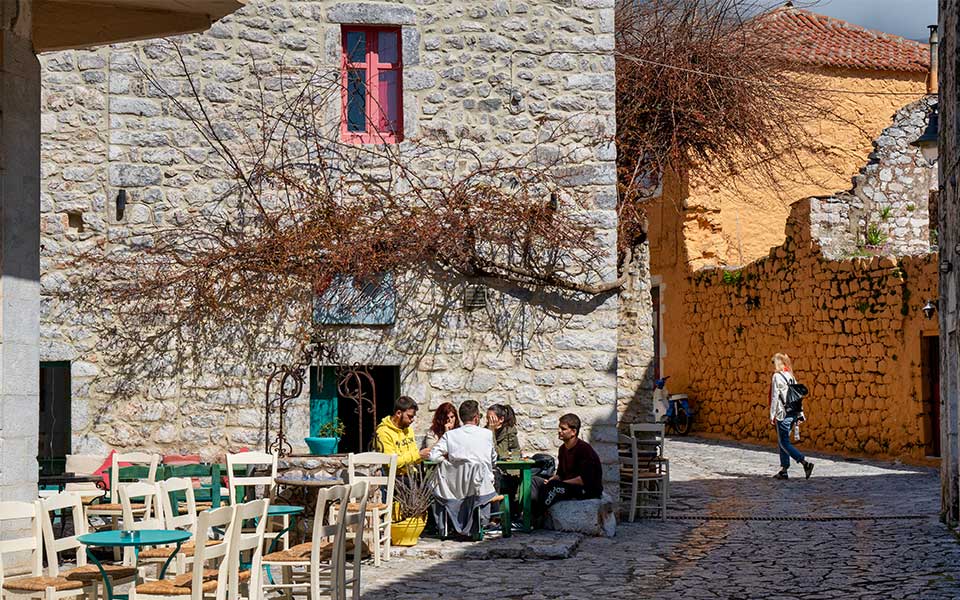
© Perikles Merakos
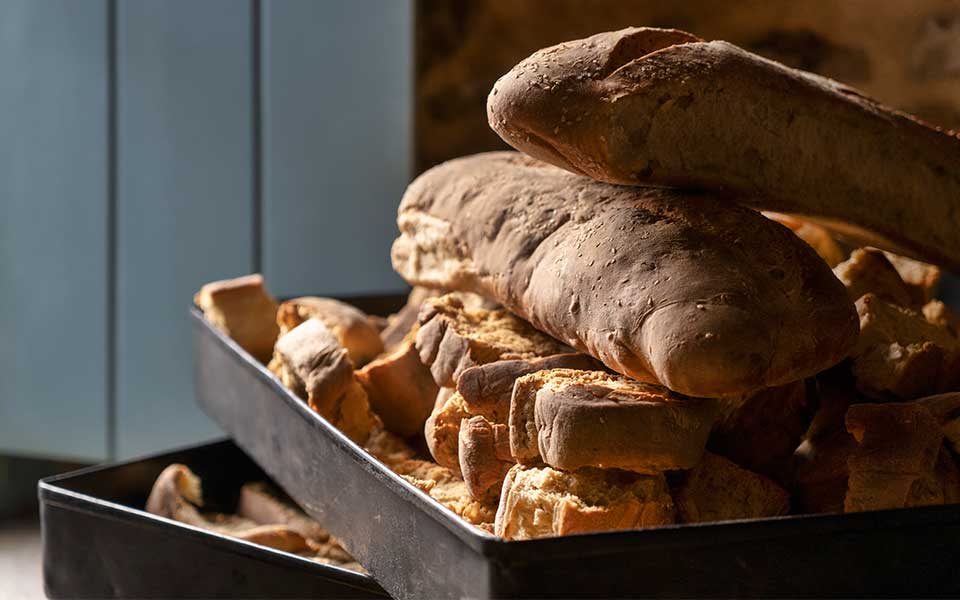
© Perikles Merakos
STROLLING IN AREOPOLI
Two Italian tourists walk into the Psomi tis Milias bakery and ask for the last two pies in the heated display case. “Νο! They’re not fresh!” is the aggressive reply they get from Angela, the daughter-in-law of the legendary, late Milia Xepapadakou. “In an hour I’ll be bringing out the fresh ones. These are from yesterday, and they’re not for sale,” she explains, as she shoves the peel into the oven where her “babies” (as she likes to call her sourdough loaves) are baking. Their preparation is a ritual. “I keep watch over them, turn on the heater and, if I’m in the mood, I even sing them a lullaby.”
You’ll experience scenes like this firsthand if you spend any time in Areopoli. The first impression that this place gives you can be misleading. The main square has the same shortcomings as many small provincial towns, with its questionable taste. So just bypass it and walk into the depths of the historic settlement. It resembles the backdrop for a film, what with its proud history, grey stone, cobbled lanes, towers, churches (the most beautiful being the metropolitan church of the Taxiarches), fluffy bougainvilleas, cats, little kafeneia, tavernas and, in summer, dozens of tourists.
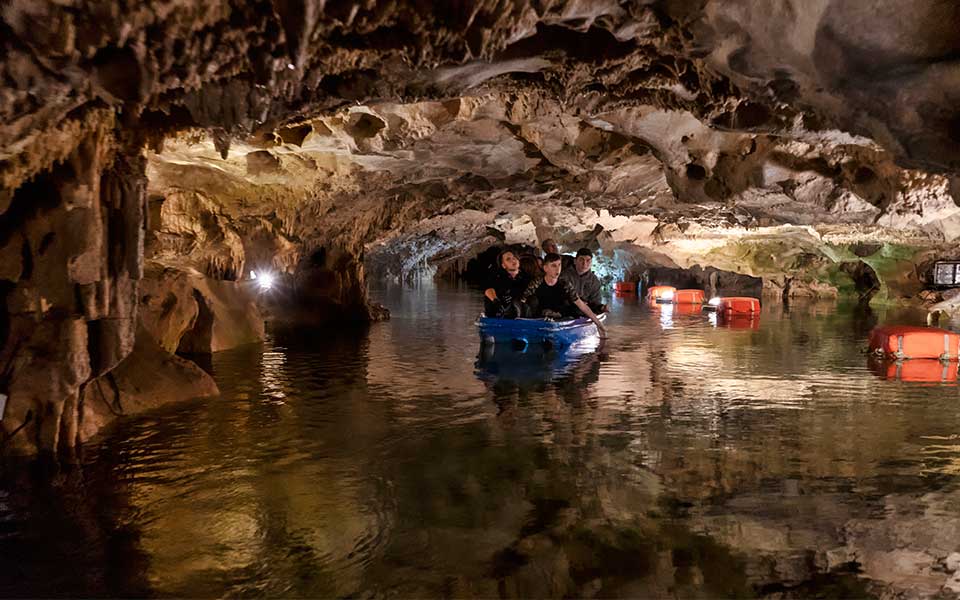
© Perikles Merakos
DIROS CAVE BOAT RIDE
For hundreds of thousands of years now, the water permeating the fissures in the limestone bedrock, has been creating a subterranean spectacle: the Cave of Diros. After taking your seat on a small boat, you enter through the natural opening – which has a diameter of only half a meter – and travel for over a kilometer through the subterranean world, dodging stalagmites and stalactites, ornate “curtains” and crystals. You then walk another 300m in the dry section of the cave.
Unfortunately, the tour lasts only 25 minutes; also, the majority of the boatmen – who have been assigned the task of acting as tour guides as well – are loath to do much else beyond row the boat and can display some of the gruffness typically associated with Maniots. To our dismay, we saw the traces left by past visitors etched into rocks, as well as many broken sections in the dry part of the cave, which was also unguarded (open daily 08:30-17:30, tel +30 27330.522.22).
MANIOT GASTRO-SOUVENIRS
At the end of August each year, fresh salt is gathered from salt marshes, which locals call loubes. Most of it is collected in Hotasia, followed by Koukouri, Tigani and Gyalia, while Tainaro provides a very small amount. You can board a little vessel at Karavostasi and follow salt producer Pierros Tsatsoulis (tel +30 698.618.9083) as far as Hotasia, where you can gather salt that’s 99.7% pure.
At Tsatsoulis’ butcher shop (Areopoli, open 07:00-19:00, tel +30 27330.515.40), for four generations now they’ve been creating syglino (a type of smoked pork), which they slow smoke with rosemary, apple sage and cherry wood. Another place worth a stop is the family-run business En Mani (Areopoli, tel +30 697.573.4149), where they cultivate and process prickly pears. You’ll be able to get a tour of the property and the production facility, and also sample some prickly pear juice.

